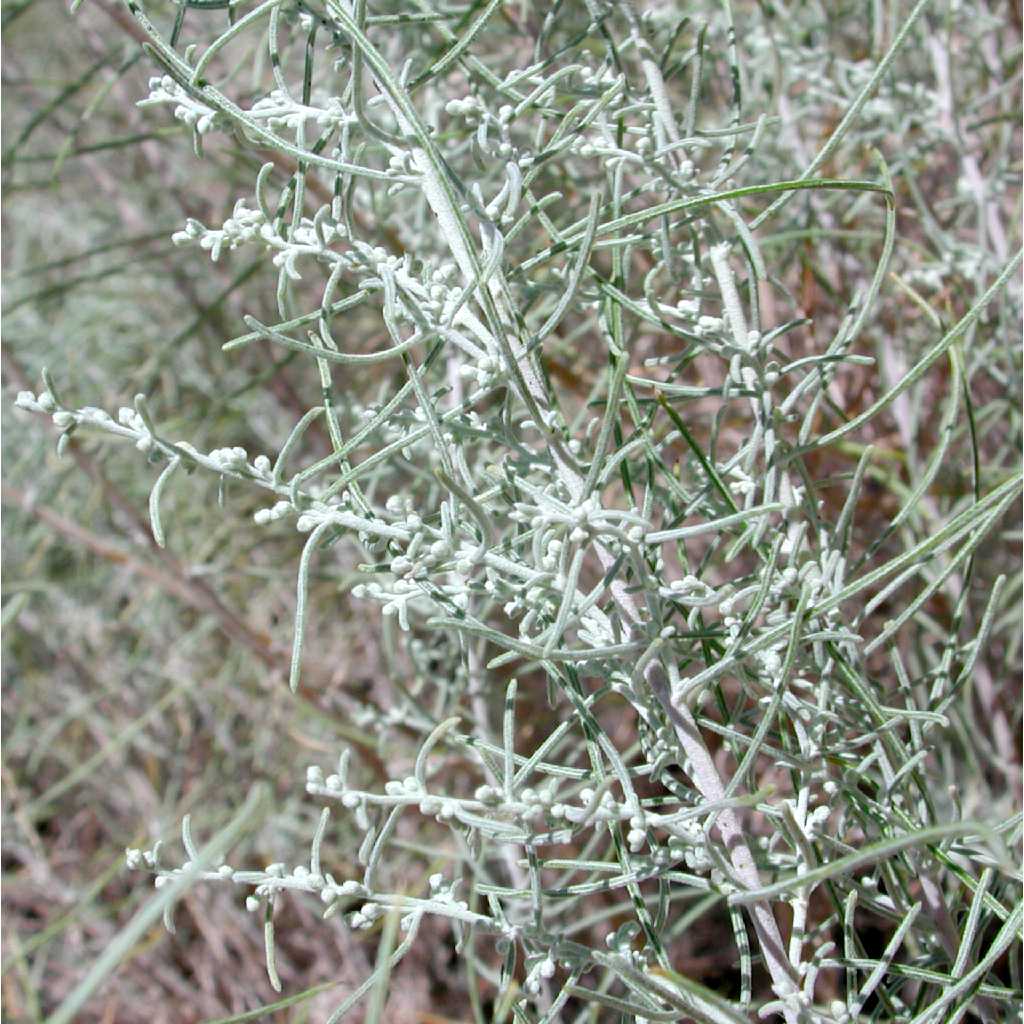|
Family: Asteraceae |
Annuals, biennials, perennials, subshrubs, or shrubs, 3-350 cm (usually, rarely not, aromatic). Stems 1-10+, usually erect, usually branched, glabrous or hairy (hairs basi- or medifixed). Leaves basal or basal and cauline; alternate; petiolate or sessile; blades filiform, linear, lanceolate, ovate, elliptic, oblong, oblanceolate, obovate, cuneate, flabellate, or spatulate, usually pinnately and/or palmately lobed, sometimes apically ± 3-lobed or -toothed, or entire, faces glabrous or hairy (hairs multicelled and filled with aromatic terpenoids and/or 1-celled and hollow, dolabriform, T-shaped). Heads usually discoid, sometimes disciform (subradiate in A. bigelovii), in relatively broad, paniculiform arrays, or in relatively narrow, racemiform or spiciform arrays. Involucres campanulate, globose, ovoid, or turbinate, 1.5-8 mm diam. Phyllaries persistent, 2-20+ in 4-7 series, distinct, (usually green to whitish green, rarely stramineous) ovate to lanceolate, unequal, margins and apices (usually green or white, rarely dark brown or black) ± scarious (abaxial faces glabrous or hairy). Receptacles flat, convex, or conic (glabrous or hairy), epaleate (except paleate in A. palmeri). Ray florets 0 (peripheral pistillate florets in disciform heads usually 1-20, their corollas filiform; corollas of 1-3 pistillate florets in heads of A. bigelovii sometimes ± 2-lobed, weakly raylike). Disc florets 2-20(-30+), bisexual and fertile, or functionally staminate; corollas (glabrous or ± hirtellous) usually pale yellow, rarely red, tubes ± cylindric, throats subglobose or funnelform, lobes 5, ± deltate. Cypselae (brown) fusiform, ribs 0 (and faces finely striate) or 2-5, faces glabrous or hairy (not villous), often gland-dotted (pericarps sometimes with myxogenic cells, without resin sacs; embryo sac development monosporic); pappi usually 0 (coroniform in A. californica and A. papposa, sometimes on outer in A. rothrockii). x = 9. Heads disciform or discoid, the outer fls in our spp. pistillate and fertile, the central ones perfect or sometimes sterile; invol bracts dry, imbricate, at least the inner scarious or with scarious margins; receptacle flat to convex or hemispheric, naked or beset with long hairs; style-branches flattened, truncate, penicillate; achenes ellipsoid or obovoid to nearly prismatic, scarcely compressed, usually glabrous; pappus none; herbs or shrubs, usually aromatic, with alternate, entire to dissected lvs and few to numerous small, ovoid to campanulate or hemispheric heads in a spiciform, racemiform, or paniculiform infl. 100+, N. Hemisphere and S. Amer. Gleason, Henry A. & Cronquist, Arthur J. 1991. Manual of vascular plants of northeastern United States and adjacent Canada. lxxv + 910 pp. ©The New York Botanical Garden. All rights reserved. Used by permission. |


